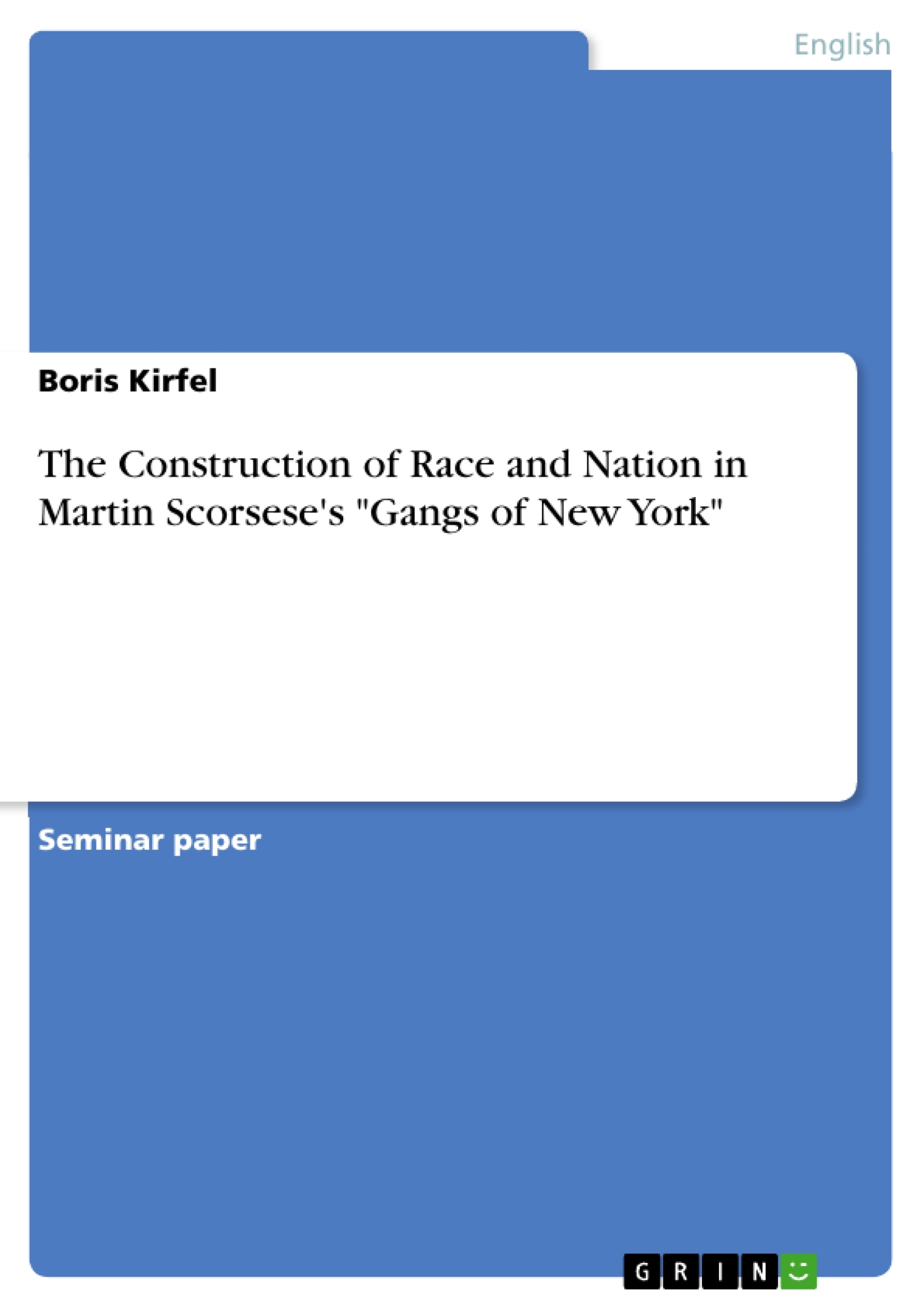„I believe in America. America has made my fortune.“ These are the very first two sentences in Francis Ford Coppola’s The Godfather from 1972 - exactly the same year when director Martin Scorsese decided to film Herbert Asbury’s non-fiction book The Gangs of New York. “Asbury (1891-1963) was a journalist and a pioneer historian of low life, whose Gangs of New York originally appeared in 1928, subtitled an informal history of the underworld.” (Christie 2003, p. 250)
At the beginning of The Godfather: Part II, a film which is about the life of an Italian who immigrates to the United States in the 1920s, the film depicts the arrival of Italian immigrants at the New York harbor. All the passengers of the ship are full of expectation. They are looking at the famous Statue of Liberty, which welcomes America’s new citizens. “Bring us your homeless and your poor”, is written in a poem by Emma Lazarus that is graven on a tablet within the pedestal on which the statue stands. (Cf. Christie 2003, p. 253) This sequence portrays the fulfilment of the American Dream.
In 2002, after nearly 30 years of preparation, Martin Scorsese’s epic Gangs of New York which is also set in New York one century before the action of The Godfather takes place, finally was released in the United States.
Scorsese’s film covers a period of New York City's history, from the 1840's through to the bloody Draft Riots of 1863, when graft and corruption permeated every level of government including the police department. The Statue of Liberty had not been built at the time in which Gangs of New York is set (Cf. Metzger 2000, p. 23), and there aren’t any Italians in the film. The movie concentrates on the struggle between the so called Native Americans and a huge number of Irish immigrants who arrive with ships every day.
The picture describes America’s birth from violence and the development of the country into the state which is presented in Coppola’s The Godfather and former pictures by Martin Scorsese like Goodfellas or Casino. Gangs of New York is in a way the foundation of which all the other movies by Scorsese are based on.
Table of Contents
- \"America was born in the streets\" Introduction
- Plot Outline
- The Construction of Race and Nation
- New York 1846 – The prologue
- The depiction of the Five Points - An image of a cultural melting pot or bleak mean streets?
- The portrayal of the conflict between the Irish immigrants and the Native Americans
- Gangs of New York looks at the Draft Riots
- Résumé
Objectives and Key Themes
This Proseminararbeit aims to analyze the construction of race and nation in Martin Scorsese's film, Gangs of New York. The paper explores how the film portrays the tumultuous social climate of New York City in the mid-19th century, particularly focusing on the conflict between Irish immigrants and Native Americans.
- The cultural construction of race and nation in the film
- The portrayal of the Five Points as a symbol of a cultural melting pot or a bleak and dangerous urban environment
- The depiction of the conflict between Irish immigrants and Native Americans
- The historical and social context of the Draft Riots of 1863
- The significance of the film's opening sequence in establishing key themes and setting the scene for the narrative
Chapter Summaries
The first chapter provides an introduction to the film, drawing parallels between Gangs of New York and other films such as The Godfather, highlighting the themes of immigration and the American Dream. The second chapter outlines the plot, setting the stage for the film's central narrative and introducing the main characters and their conflicts. The third chapter delves into the film's central theme of the construction of race and nation, examining the representation of the Five Points and the conflict between Irish immigrants and Native Americans. It also explores the historical context of the Draft Riots of 1863.
Keywords
The key terms and concepts explored in this paper include race, nation, immigration, urban environment, cultural construction, Irish immigrants, Native Americans, the Five Points, the Draft Riots, and historical context. Through an analysis of these themes, the paper sheds light on the film's exploration of the complex realities of America's formative years.
- Citar trabajo
- Boris Kirfel (Autor), 2004, The Construction of Race and Nation in Martin Scorsese's "Gangs of New York", Múnich, GRIN Verlag, https://www.grin.com/document/23065



